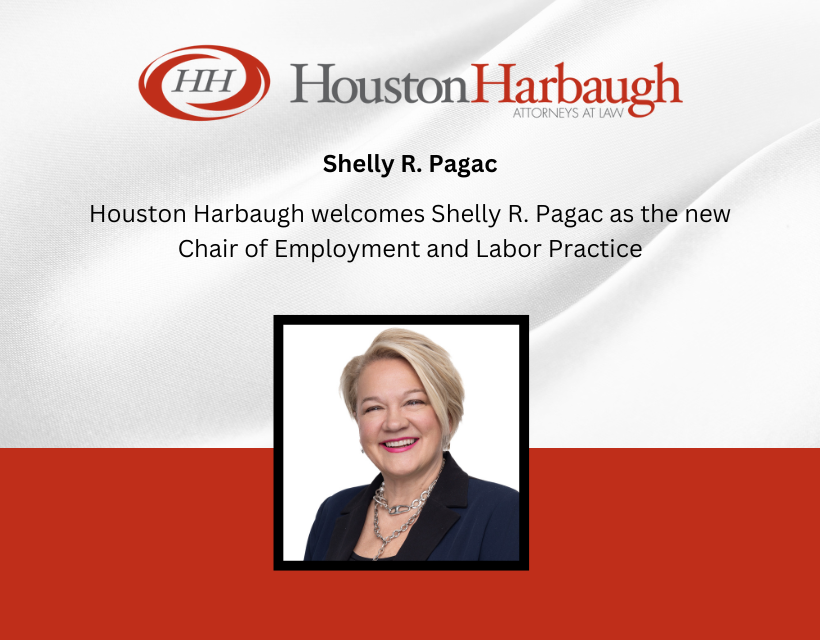PA Federal Business Decisions Volume 12, No. 3
Covenant Not To Compete Improperly Held Invalid At Pleadings Stage
In Victaulic Co. v. Tieman, 2007 U.S. Dist. LEXIS 20077 (3d Cir. 2007), the Court of Appeals for the Third Circuit reversed the District Court’s ruling that a covenant not to compete was unreasonable as a matter of law. Tieman worked for Victaulic for several years as a sales representative primarily in Ohio and western Pennsylvania. Victaulic alleged that he had contact with customers throughout the country and that he also trained new sales representatives in many states. Tieman had signed a covenant not to compete which included the following restrictions:
Upon leaving Victaulic he would not sell or distribute the types of items regularly sole (or contemplated for sale) by Victaulic for 12 months (1) within a ten-state Restricted Victaulic Sales Region, or (2) in any area in which Victaulic products are sold on behalf of nine named competitors (of which Tyco is one). He further agreed (3) not to solicit any past or present Victaulic customer on behalf of any business in competition with it.
Id. at *2-3 (footnote omitted). Tieman started working for Tyco as a sales representative selling the same type of products as soon as he left Victaulic. He apparently does not sell Tyco’s products in his old three-state territory, but does sell within the ten-state Restricted Victaulic Sales Region.
Tyco and Tieman filed a declaratory judgment action in Ohio seeking a determination that the covenant not to compete was invalid and Victaulic counterclaimed for breach of contract, misappropriation of trade secrets, tortious interference with contractual relations and unfair competition. Victaulic also filed a separate suit making substantially the same allegations in the Eastern District of Pennsylvania. The Ohio action was transferred to the Eastern District and the cases were consolidated. The District Court granted Tyco and Tieman’s motion to dismiss the breach of contract, tortious interference and unfair competition claims because it found the covenant unreasonable as a matter of law and thus invalid. At the time of this decision, Victaulic’s motion for preliminary injunction was also pending.
After first deciding that it had jurisdiction on the basis that the court’s order effectively denied Victaulic’s request for injunction, the Court of Appeals for the Third Circuit addressed the reasonableness of the covenant not to compete and reversed the District Court’s decision. First, the Court noted that Tyco and Tieman bore the burden of proof because unreasonableness is an affirmative defense and that this burden is high at the motion to dismiss stage-i.e., unreasonableness must be clear from the face of the complaint.
The Court stated the general rule in Pennsylvania that enforcement of such covenants is disfavored, but are proper where reasonably necessary to protect the employer’s interests as long as the restrictions are limited in duration and geography and tailored to protect legitimate interests. Tyco and Tieman argued that the covenant was overbroad and thus not reasonably limited as required by Pennsylvania law. The Court addressed each of the three objections raised by Tyco and Tieman-product-type restriction, customer restriction and geographic limitation.
Tieman argued that Victaulic sold many types of products but he had only been involved in selling one type and thus the prohibition of him selling all types of products was unreasonably broad. The Court criticized the District Court’s acceptance of this argument for several reasons. First, the District Court appeared to place the burden on Victaulic to prove reasonableness rather than on Tieman to prove unreasonableness as required. Second, Tyco and Tieman’s “proof” is not properly considered at the motion to dismiss stage and scenarios can be imagined based on the allegations in the complaint which would make the restriction reasonable. Third, factual issues abound, such as the interrelationship of the product sold by Tieman and the other product lines of the company and whether training, trade secrets and goodwill garnered by Tieman while working for Victaulic would be of use with respect to the other products. Fourth, the District Court used a website to take judicial notice of certain facts about Victaulic’s business. The Court of Appeals found this improper because that is not the proper use of judicial notice; the website was not authenticated as being owned by the company; even if so owned, a website is a marketing tool and facts stated thereon cannot be considered to be from a “source whose accuracy cannot reasonably be questioned,” which is a requirement for taking judicial notice. Finally, the Court took exception to the District Court’s inference from these “facts” that Tieman’s training and specialized knowledge was not transferable to the other product lines, particularly where the inference was drawn against the non-moving party.
With respect to the customer restriction, the Court rejected the argument that the provision was overbroad merely because it applied to all customers rather than just the customers Tieman worked with while at the company. The Court reiterated that the question of reasonableness is fact-intensive and the pleadings alone do not provide the factual information necessary to determine the extent of Tieman’s specialized knowledge and interaction with customers.
Tyco and Tieman’s third objection was that the geographic limitation was too broad because it prevented him from selling products for Tyco anywhere Victaulic’s products were sold. The Court refused to accept this argument, stating, in part: “In this Information Age, a per se rule against broad geographic restrictions would seem hopelessly antiquated, and, indeed, Pennsylvania courts (and federal district courts applying Pennsylvania law) have found broad geographic restrictions reasonable so long as they are roughly consonant with the scope of the employee’s duties.” Id. at *24-25 (citations omitted). The Court noted that the pleadings do not allege where Victaulic’s products are sold and again criticized the District Court for taking judicial notice of information contained on the website.
The Court’s opinion stressed the fact that whether a covenant not to compete is enforceable is dependent on the facts related to the employer’s need to protect its interests versus the employee’s need to earn a living in his chosen profession. The pleadings, the Court concluded, will rarely provide enough facts to make that determination at the motion to dismiss stage.
–Contributed by Bridget M. Gillespie, Esquire, Houston Harbaugh, Pittsburgh, PA; bgillespie@psmn.com
Identification Of Specific Products Required For Patent Declaratory Judgment
In QRG, Ltd. v. Nartron Corp., 2007 U.S. Dist. LEXIS 55848 (M.D. Pa. Aug. 1, 2007), the plaintiff, QRG, filed an action seeking a declaration from the court that certain of its product lines did not infringe on some of defendant Nartron’s (“Nartron”) patents. Nartron counterclaimed that some of QRG’s products infringed one of its patents.
On November 1, 2006, Nartron filed a motion to dismiss for lack of subject matter jurisdiction. In a March 2, 2007 order, the court found that QRG met the requirements of Article III and the Declaratory Judgment Act with respect to its identification of the form QProx product line. However, the court reserved its ruling with respect to QRG’s identification of “a family of capacitive touch sensor products,” finding that this description failed to satisfy the case or controversy requirement because it was too general to identify a specific product. QRG was permitted to file an amended complaint, which it did, identifying its QProx, QTouch, QSlide, QWheel, QMatrix and QField product lines as the products at issue.
As the case progressed, the parties quickly discovered that there were issues regarding the scope and necessity of discovery information sought. Following a May 10, 2007 scheduling conference, the court stayed briefing on summary judgment motions to give the parties an opportunity to jointly determine whether the issues and patents in this matter could be narrowed. Following status reports received from the parties, the court determined that the parties would most likely be unable to overcome this impasse on their own.
The Declaratory Judgment Act provides in relevant part that “[i]n a case of actual controversy within its jurisdiction . . . any court of the United States, upon the filing of an appropriate pleading, may declare the rights and other legal relations of any interested party seeking such declaration, whether or not further relief is or could be sought.” 28 U.S.C. § 2201(a). Essentially, the court must determine “whether the facts alleged, under all the circumstances, show that there is a substantial controversy, between parties having adverse legal interests, of sufficient immediacy and reality to warrant the issue of a declaratory judgment.” Teva Pharms. USA, Inc. v. Pfizer Inc., 395 F.3d 1324 (Fed. Cir. 2005) (quoting EMC Corp. v. Norand Corp., 89 F.3d 807 (Fed. Cir. 1996)).
The court noted that in order to meet the requirements of Article III and the patent laws, a party must identify a specific product as opposed to an entire product line. Laitram Corp. v. Cambridge Wire Cloth Co., 919 F.2d 1579, 1580-82 (Fed. Cir. 1990). As a result, the court found that QRG’s broad identification of its product lines, without more, failed to establish a justiciable case or controversy. In addition, the court found that Nartron’s counterclaim failed to satisfy the “case or controversy” requirements. The court reviewed the documents that had been submitted to that point in the litigation, noting any references to specific products included by the parties. Accordingly, the court limited the litigation to QRG’s specifically identified products. All other claims were dismissed for lack of subject matter jurisdiction because the parties had failed to satisfy the “case or controversy” requirement of Article III and the Declaratory Judgment Act.
–Contributed by Stephen S. Photopoulos, Esquire, Houston Harbaugh, Pittsburgh, PA
District Court Cites Supreme Court KSR Decision In Finding Of Obviousness
In PDI Performance Products, Inc. v. Norfab Corporation, 2007 U.S. Dist. LEXIS 63733 (E.D. Pa. Aug. 29, 2007), plaintiff PBI sued defendant Norfab for patent infringement, unfair competition and false designation of origin, trademark and trade dress dilution. The court granted summary judgment in favor of Norfab on Counts II and III of the complaint and then Norfab filed a motion for summary judgment in which it asserted that PBI’s patent is invalid. PBI filed a motion for partial summary judgment on the ground that its patent is valid.
PBI is engaged in the research and development of flame and thermal resistant textile fabrics. It developed a fabric to be used in firefighter’s gear that it marketed as PBI MATRIX. In August, 2001, PBI filed a patent application for the PBI MATRIX fabric, identifying certain prior art. On September 23, 2003, the U.S. Patent and Trademark Office (“USPTO”) granted PBI’s patent.
In 2003, Norfab approached PBI to discuss the possibility of forming a joint venture to manufacture the PBI MATRIX fabric. The parties were unable to reach an agreement. Sometime thereafter Norfab began to sell a fabric similar to PBI MATRIX, which it called Omni-Elite. PBI filed the instant suit claiming that Norfab’s Omni-Elite fabric infringed its patent for PBI MATRIX.
Following the filing of the complaint, Norfab filed a request in the USPTO for an ex parte re-examination of PBI’s patent. The court action was stayed pending a decision on the re-examination. On March 19, 2007, the USPTO mailed a non-final action in the re-examination proceeding recommending that PBI’s patent be rescinded.
Norfab then moved for partial summary judgment, arguing that PBI’s patent was invalid because it did not meet the conditions for patentability that the invention be novel and that its subject matter be non-obvious. In support of this assertion, Norfab identified prior art which PBI did not identify in its Patent Application and which the original patent examiner did not consider. Norfab contended that this other prior art supported its assertion of invalidity. In particular, Norfab identified two patents (known as the “Shaffer Patents”), each of which described a lightweight, tear-resistant fabric where the background yarns are spun yarns, and the fabric is woven in a configuration whereby the reinforcing yarn is inserted into the background fabric. Each of the Shaffer Patents provided that the fabric described could be used for many purposes including, but not exclusively: tents, tarps, awnings, canopies and marine coverings and banners.
Norfab contended that the claims of PBI’s patent were obvious under the Shaffer Patents and the other prior art referenced. Norfab also asserted that the motivation to combine the elements known in the prior art was expressly provided for by each of the Shaffer Patents. PBI countered that a person having ordinary skill in the art would not have consulted the Shaffer Patents because those patents did not relate to specific uses for firefighter gear. The court disagreed with PBI, holding that the Shaffer Patents were within the same field of endeavor as the PBI patent. Thus, a person having ordinary skill in the art would reasonably have consulted the Shaffer Patents as being analogous prior art within the same field of endeavor.
The court then considered the combination of the Shaffer Patents and the prior art admitted in PBI’s patent. The court noted that the patent examiner recognized that the only feature of PBI’s patent which was not found in the prior art was the claimed weight ratio and insert ratio of the multi-filament to the spun yarns. The court then noted that the Shaffer Patents did teach a woven textile fabric where a background fabric is inserted with multi-filament fibers. The court also referenced claim charts created by Norfab, which provided a detailed side-by-side comparison of the claims of the PBI patent and the prior art. The court noted that the charts confirmed that each claim of the PBI patent could be found in either the Shaffer Patents or the admitted prior art.
The court then cited the Supreme Court’s recent decision in KSR v. Teleflex, 127 S. Ct. 1727 (2007) noting, “when a patent simply arranges old elements with each performing the same function it had been known to form and yields no more than one would expect from such an arrangement, the combination is obvious.” The court held that it was plain that a combination of the prior art admitted in PBI’s patent and either of the two Shaffer Patents would make the fabric taught in the PBI patent obvious. Therefore, the court held that the combination of the Shaffer Patents with the admitted prior art rendered the claims of PBI’s patent obvious under 35 U.S.C. § 103.
PBI attempted to counter, arguing that the court should not have considered the Shaffer Patents on the grounds that there was no motivation to combine the Shaffer Patents with the admitted prior art. The court disagreed, noting that neither the admitted prior art nor the tear and abrasion reduction techniques of the Shaffer Patents functioned any differently when combined in the PBI patent than they had functioned in their previously documented uses in durable outdoor products such as tents and marine coverings. Moreover, the improvements resulting from a combination of the Shaffer Patents with the admitted prior art would have been easily recognizable to a person of ordinary skill in the art. The court went on to hold, “like the adjustable pedal assembly at issue in KSR, this case involves only the simple substitution of one known element for another or the mere application of a known technique to a piece of prior art ready for the improvement.”
In sum, the court held that the combination of the Shaffer Patents with the admitted prior art rendered the claims of the PBI patent obvious under 35 U.S.C. § 103, and that there existed a teaching, suggestion or motivation to combine those two elements by a person having ordinary skill in the art. Therefore, the PBI patent was invalid.
–Contributed by Stephen S. Photopoulos, Esquire, Houston Harbaugh, Pittsburgh, PA
Inadmissible Hearsay Relied Upon To Calculate Special Damages Precludes Defamation Counterclaim But Plaintiffs Need Not Produce Evidence of Financial Harm To Survive Summary Judgment Motion On Claims Under The Lanham Act And Others
In Synthes v. Globus Medical, 2007 U.S. Dist. LEXIS 50812 (E.D. Pa. 2007), the plaintiffs (“Synthes”) filed suit against the defendants (“Globus”) alleging that Globus, through two of its officers who had been managers for Synthes, and who had resigned from Synthes to start Globus, improperly used resources and information allegedly obtained during the course of employment with Synthes, and that they had unlawfully recruited Synthes’ employees, and improperly misappropriated and passed off certain Synthes products as their own. Globus counterclaimed for defamation, trade libel, tortious interference with prospective contractual relations, unfair competition and several counts for declaratory judgment. The Court granted the plaintiffs’ motion for partial summary judgment on all counts of the defendants’ counterclaim.
Globus based its counterclaims on a series of statements which it attributed to one of Synthes’ representatives. With regard to the claim for defamation, Globus relied upon three emails produced late in discovery, which it contended reflected false and defamatory statements regarding Globus’ products, ability to conduct its business, financial stability and business reputation. Synthes at *6. These emails formed the basis for Globus’ expert’s calculation of damages. Synthes argued the emails were inadmissible hearsay, and could not support Globus’ claims for damages. Id. at *11.
The Court examined the emails and agreed that they constituted inadmissible hearsay. Additionally, with regard to the count for defamation, the Court pointed out that “Pennsylvania law requires a showing of special damages to prove defamation.” Synthes at *7. Having found that Globus failed to produce evidence of special damages, it dismissed the defendant’s claim for defamation as a matter of law.
With regard to the claim for trade libel, the Court stated, “[w]hereas [an] action for defamation is intended to secure one’s interest in character and reputation, an action for trade libel is calculated to protect against derogatory statements that affect the marketability of a party’s goods or services.” Id. at *14 (internal citations omitted). The Court again found that the statements upon which Globus was relying to establish its claim for trade libel were inadmissible hearsay, and Globus’ claim for trade libel was likewise dismissed.
With regard to the claim for tortious interference, the Court again held that Globus failed to provide any admissible evidence of actual legal damages, and therefore, the Court dismissed the claim as a matter of law. Id. at *25. Finally, with regard to Globus’ claim for damages as part of its claim for unfair competition, Globus alleged that Synthes had “wrongfully and intentionally attempted to thwart Globus’ rise in the spinal implant device business by engaging in a continuous course of conduct involving disseminating false and malicious information about Globus’ personnel and products . . . .” Having found that Globus’ other claims failed, the Court stated “to the extent that Globus bases this counterclaim for unfair competition on allegations of tortious interference with prospective contractual relationships, trade libel, and defamation, the counterclaim must fail.” Id. at *30.
The Court also denied the defendants’ motion for summary judgment on the plaintiffs’ claims against it under the Lanham Act, misappropriation of trade secrets, breach of contract, tortious interference, Pennsylvania unfair competition, breach of fiduciary duty and civil conspiracy. The Court stated that “a plaintiff seeking damages under the Lanham Act must establish customer reliance but need not quantify loss of sales as that goes to the measure of damages, not the cause of action.” Id. at *18. Even though the plaintiffs had not established evidence of lost profits, the Court denied the defendants’ motion for summary judgment on the plaintiffs’ claim under the Lanham Act because lost profits are not required. The Lanham Act permits recovery of defendant’s profits and the costs of the action regardless of lost profits.
To establish misappropriation of trade secrets, a plaintiff must show: (1) the existence of a trade secret; (2) communication of the trade secret pursuant to a confidential relationship; (3) use of the trade secret in violation of that confidence; and (4) harm to the plaintiff. Id. at *19 (internal citations omitted). Globus argued that because the plaintiffs had not produced any financial information regarding lost sales, lost profits or other financial loss, that the last element of the above was unsatisfied and the claim failed. The Court disagreed, however, finding that “there is no requirement that the harm to the plaintiff be of a financial nature to establish the final element of this tort.” Id. at *22. Moreover, damages may also be measured by defendant’s profits. As a result, Globus’ motion for summary judgment on this claim was denied.
The Court applied the same reasoning in denying the defendants’ motion with regard to the plaintiffs’ breach of contract counts, which alleged that the former employees had breached an agreement not to use Synthes’ secret and confidential information when they left Synthes. Globus again attempted to argue that the failure to produce financial information defeated the breach of contract claim, but the Court disagreed, stating “by the very nature of covenants not to compete, damages in the nature of lost profits are difficult to establish with mathematical certainty and only reasonable certainty will be required.” Id. at *23. The Court further noted that lost profits are not the only measure of damages.
Finally, the plaintiffs also claimed that the former employees had breached a fiduciary duty by misappropriating confidential and proprietary information. Globus argued that the claim failed because the plaintiffs could not prove the essential element of harm or causation. The Court disagreed, stating “parties alleging breaches of fiduciary duty need not show the existence of damages other than the offending party’s receipt of a benefit that should have inured to the complainant.” Id. at *31. Having found that the plaintiffs were not required to provide financial information to support its breach of fiduciary duty claim, the Court also denied the defendants’ summary judgment as to this Count.








